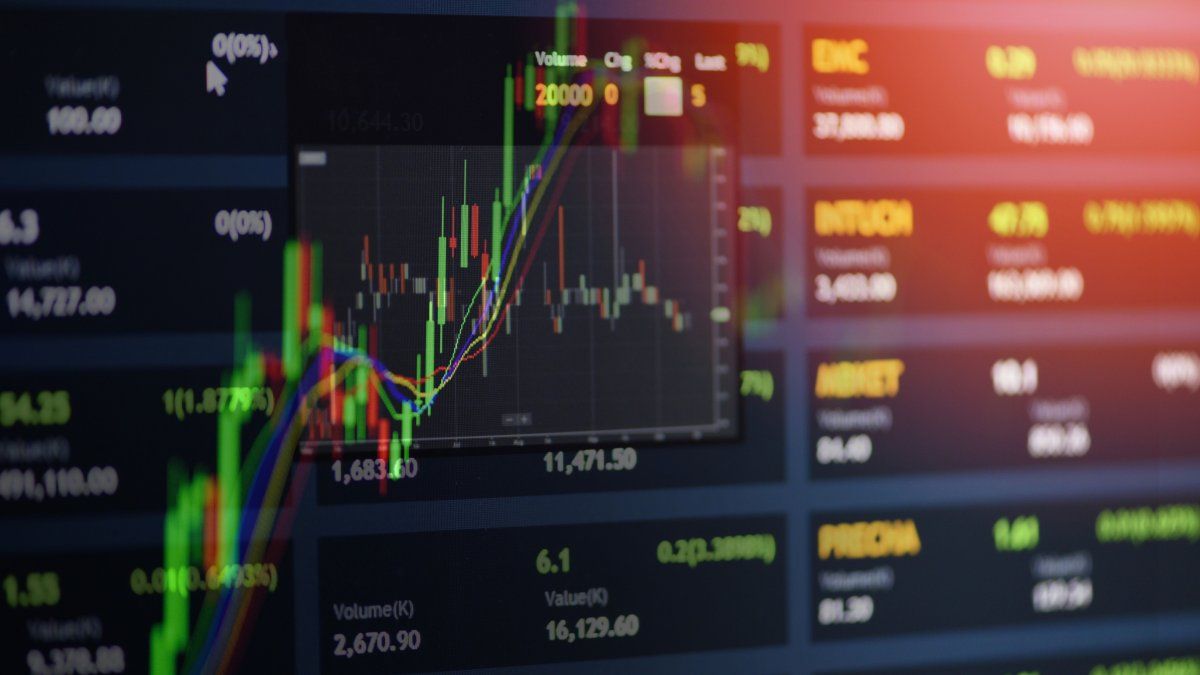In the midst of a negative climate in international markets, Argentine stocks and sovereign securities operate with strong declines this Friday, January 10, after the important payment of debt in dollars this week to bondholders, which encouraged investors to recalibrate strategies in view of the recovery of the economy in 2025.
The day before, the Government faced the payment of some US$4,360 million for income and amortization of its main public securities, the Globals issued under foreign law and the Bonares under Argentine law.
Under this panorama, The leading S&P Merval index of the Buenos Aires stock market took profits and lost a firm 2.1% in pesos and 3.1% in dollars. On Thursday, measured in hard currency, it had climbed 1.7% to 2,388 points, its all-time high at closing.
The leading shares that fell the most are Transportadora de Gas del Sur (-6.1%); Edenor (-5.6%), and Transportadora de Gas del Norte (-5.4%).
Regarding the papers of Argentine companies that operate on Wall Street, the majority of losses are recorded: the main ones are those of Transportadora de Gas del Sur (-5.4%); Edenor (-0.8%), Central Puerto (-0.7%). On the other hand, the assets that rose the most were those of BBVA bank (+2.6%); Supervielle (+2.2%); and Mercado Libre (+2.1%).
JP.Morgan bank analysts improved their assessment of the oil company YPF in a note to clients, saying the energy industry in the South American country has room for further growth as part of the country’s “economic transformation.” YPF shares rose 0.2% in New York.
The market was monitoring a global advance in the dollar after the release of solid US employment figures, which rThey reinforced the view that the Federal Reserve (Fed) will maintain a cautious approach to rate cuts this year.
Bonds in dollars and country risk
In fixed income, sovereign bonds operate with generalized declines along with a country risk with an increase of 13 units to a balance area of 572 basis points.
The falls are led by the Bonar 2041 (-1.7%), the Global 2030 (-1.6%), and the Bonar 2029 (-1.6%).
“This month’s payment of the dollar bonds was assured some time ago, however, within six months the same amount must be paid. Today the Treasury has fewer peso deposits left to buy foreign currency, even the financial surplus does not exist either.” It is enough to buy currency”remarked Lucio Garay Méndez, economist at the consulting firm EcoGo.
“Seen from the central bank’s side, the delay in the real exchange rate, the recovery of activity and the intervention in the gap to sterilize also do not allow (the BCRA) to accumulate dollars that could potentially be used to pay the debt,” he added. “This results in the Treasury depending on the country’s risk continuing to decline and being able to access the markets again as soon as possible at a low cost to be able to refinance that debt,” he explained.
Operators are looking forward to December inflation, which will be reported next Tuesday, since a reduction in the “crawling peg” of up to 1% is not ruled out.
“The Treasury paid interest and capital (…) by purchasing international reserves from the Central Bank with its deposits in pesos that it accumulated with its primary surplus and bond tenders in pesos,” reported Banco Mariva. “On the other hand, the Government is negotiating a new agreement with the International Monetary Fund (IMF) that will allow it to further increase the central bank’s international reserves beyond covering maturities with this organization,” he said.
In 2025, Argentina must pay the multilateral credit organization about $2.5 billion in interest. For this reason, President Javier Milei’s commitment to respect fiscal balance and maintain control of monetary expansion, consistent with the growing demand for money, adjusts inflation expectations downward.
Analysts project a GDP of around 5% upside for 2025, after the dragging recession, with moderate inflation in the area of almost 26% annually, far from the three digits with which 2024 closes.
Source: Ambito




